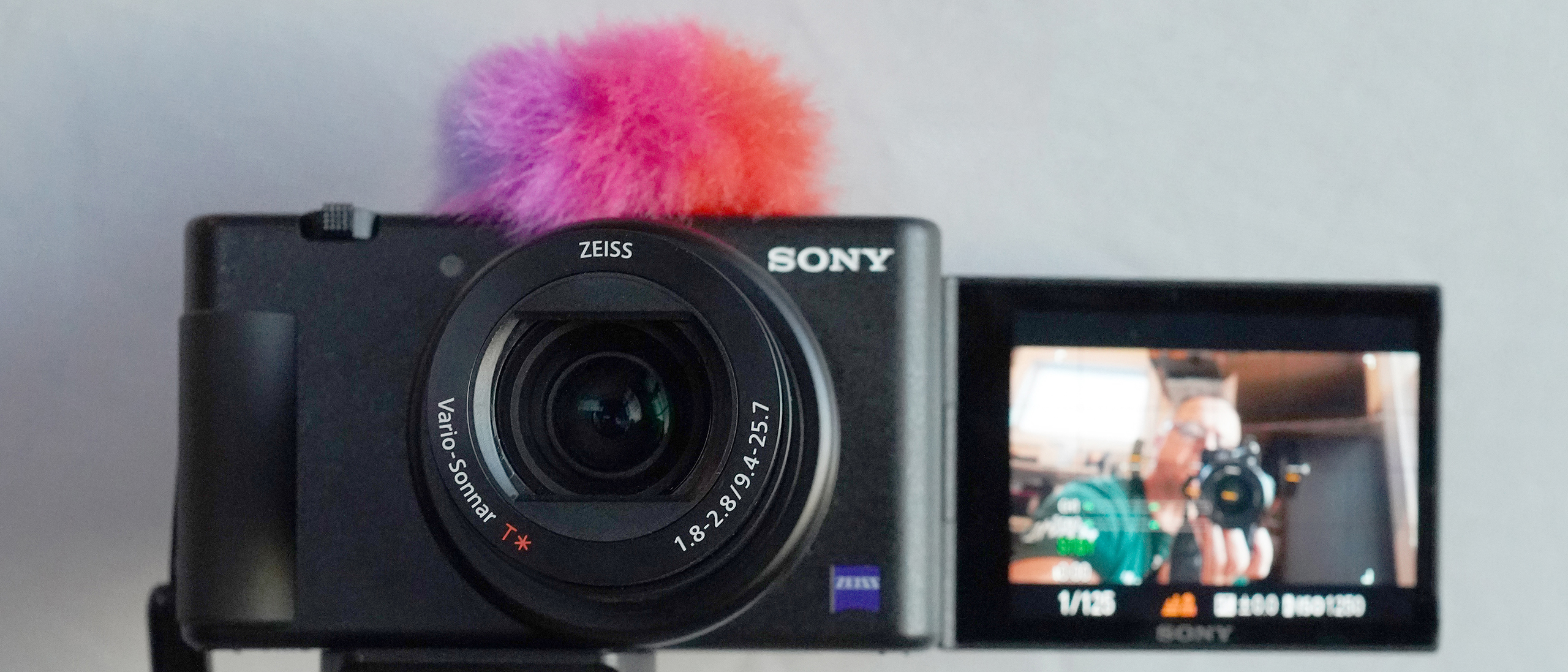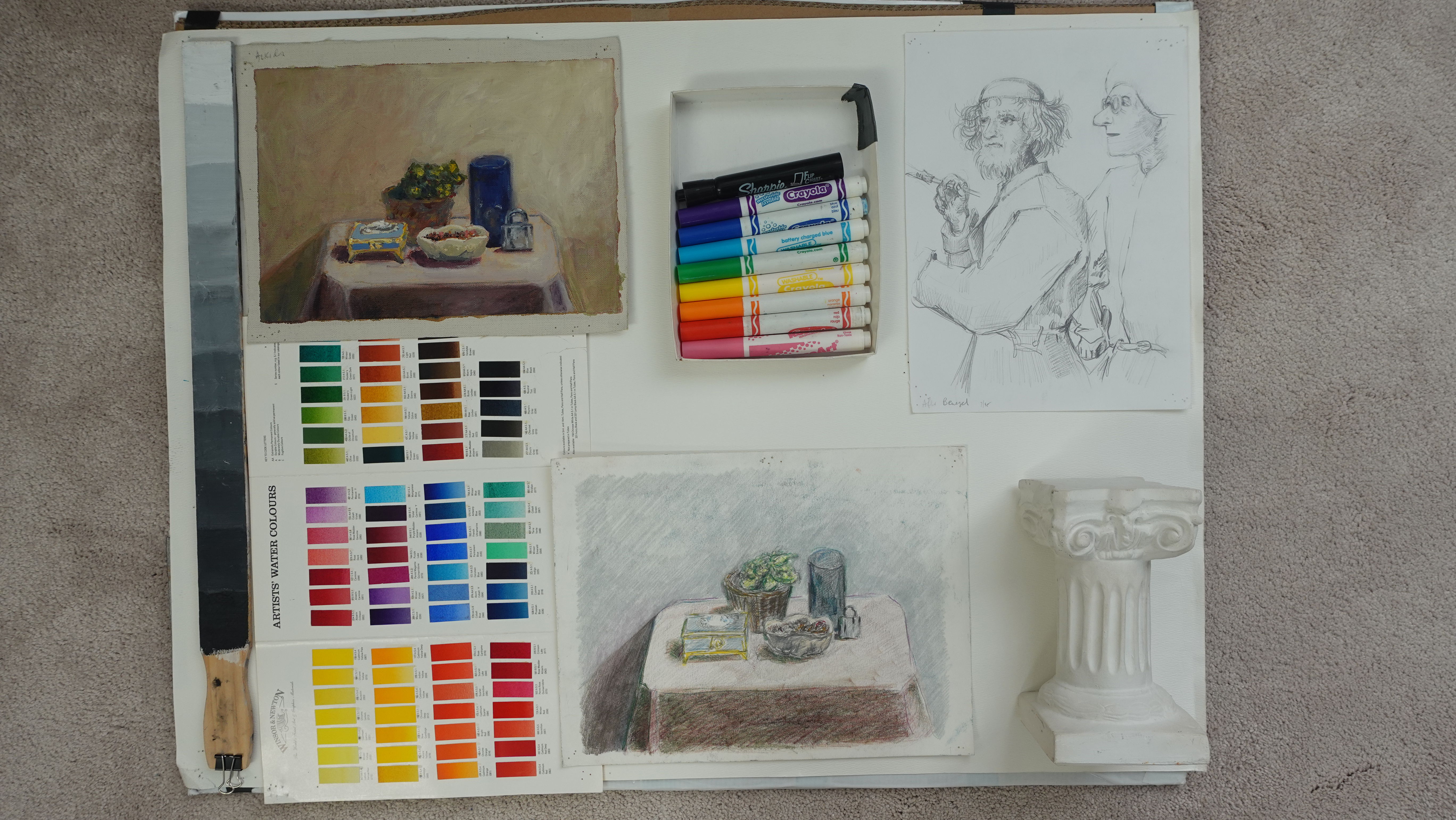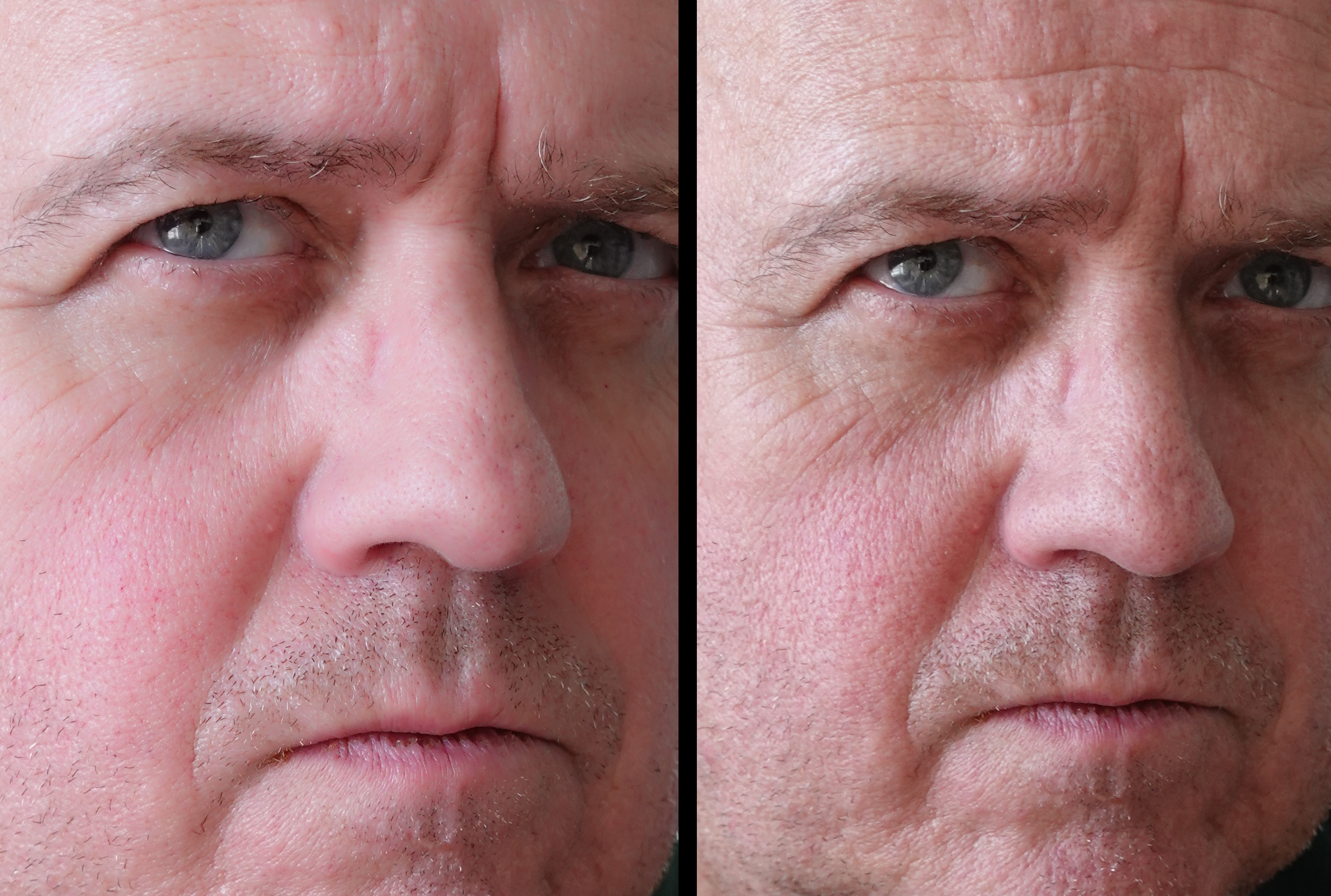Tom's Guide Verdict
The Sony ZV-1 should win the hearts of many vloggers thanks to its blend of compelling video features, very good quality footage and ease of use.
Pros
- +
Powerful yet easy-to-use features
- +
Relatively inexpensive
- +
Very good quality video and stills
- +
Excellent AF
- +
Very good quality audio
- +
Can be used as a webcam
Cons
- -
May not be versatile enough for advanced vloggers
- -
Image stabilization could be better
- -
Streaming and webcam features not available on macOS Big Sur
Why you can trust Tom's Guide
Image Sensor: 20.0MP 1-inch-type CMOS
Focal Length Equivalent: 24–70 mm (approx. 2.9x optical zoom)
Storage Media: SDXC/SDHC/SD, Memory Stick PRO Duo, Memory Stick PRO-HG Duo
Image Stabilization: Optical IS
Display: 3.2-inch touch LCD
ISO: 100-51,200 (expandable to 1,640,000)
Max video resolution: XAVC S 4K (3,840 x 2,160/30p at 100 Mbps)
Slow-Motion Video / Time-Lapse: Yes / Yes (using desktop software)
Built-in Flash: No
Wireless & Bluetooth: Yes
Ports: Multi/Micro USB Terminal, High-Speed USB (USB2.0), Micro HDMI, Mic jack (3.5-mm stereo mini jack), Multi Interface Shoe
Battery life (CIPA): Approx. 75 mins. (Movies, continuous shooting with monitor on); approx 260 shots (with monitor on).
Size (body): 4.3 x 2.4 x 1.8 inches
Weight: 9.5 ounces, body only
The Sony ZV-1 is an intriguing compact camera for a number of reasons. It’s aimed squarely at vloggers, with features such as a side-opening swiveling touchscreen LCD screen, Soft Skin Effect mode, Product Showcase setting and directional mic all designed to make it easier to shoot great video. At the same time, it maintains the high quality that photographers have come to expect from Sony’s long-running RX100 series, with which it shares many similarities.
Indeed, the ZV-1 keeps many of the same specs found on the RX models, such as a 1.0-type stacked Exmor RS CMOS image sensor and a 24-70mm equivalent zoom lens. It comes with an f/1.8-2.8 ZEISS Vario-Sonnar T large-aperture lens, too, offering a high quality shallow depth of field to the footage it shoots. Plus, ideally for this quarantine era, Sony has recently made the ZV-1 capable of live streaming and acting as a webcam thanks to its firmware 2.0 upgrade.
- Best photo editing software
- Save your images in the cloud with the best photo storage and sharing sites
After using the Sony ZV-1 camera for a few weeks, I found a lot to love about shooting with it — in fact, it's shot to the top of the Tom's Guide best cameras for vlogging list. Read on for the full Sony ZV-1 review.
Note: For this review, I also used Sony Vlogger Kit (ACCVC1), which includes a GP-VPT2BT Shooting Grip with Wireless Remote Commander. It also comes with a 64GB memory card. The grip is compatible with a variety of Sony cameras.
Sony ZV-1: Price and availability
The Sony ZV-1 was introduced in 2020 for $799, but is currently available at many outlets for a very reasonable $699. The price for the Sony ACCVC1 Vlogger Kit remains at $149.
Sony ZV-1 review: Design and controls
The Sony ZV-1 looks very much like the RX100 VII, and in fact, Sony says the sensor and processor come from that camera.
However, Sony redesigned many other aspects of the ZV-1 to appeal to vloggers, such as the fact that its LCD opens to the side, instead of up or down. This is a feature that makes it much easier to compose shots in selfie mode while connecting external audio accessories.
Get instant access to breaking news, the hottest reviews, great deals and helpful tips.
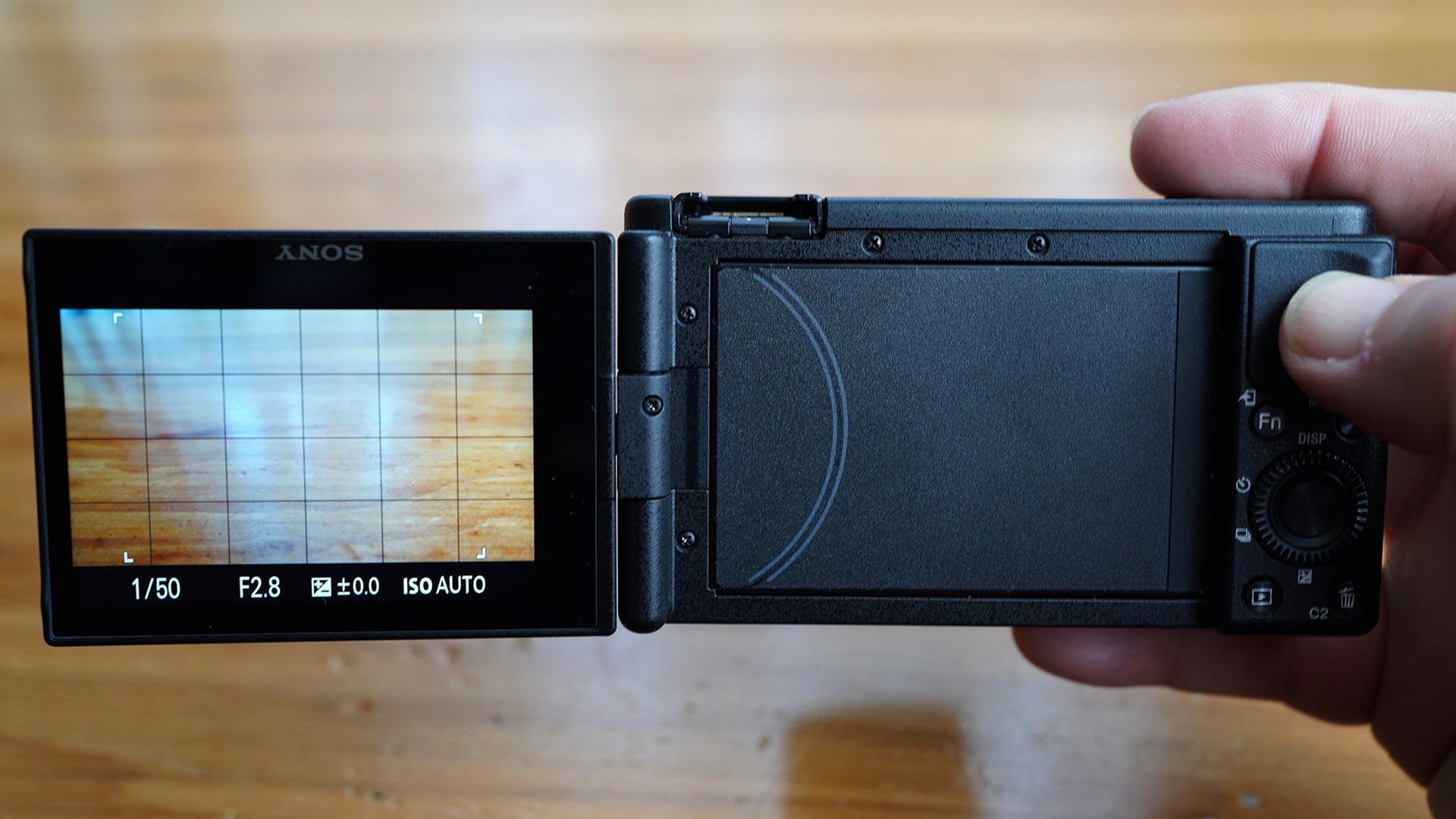
Because of the camera’s small footprint, Sony needed to make some tough choices as to which buttons and controls to include and which to omit — while also reworking it for vloggers. For instance, you’ll find that the video record button is larger than any found on the RX100 series models, plus, there’s a light on the front of the camera to let you know you’re recording.
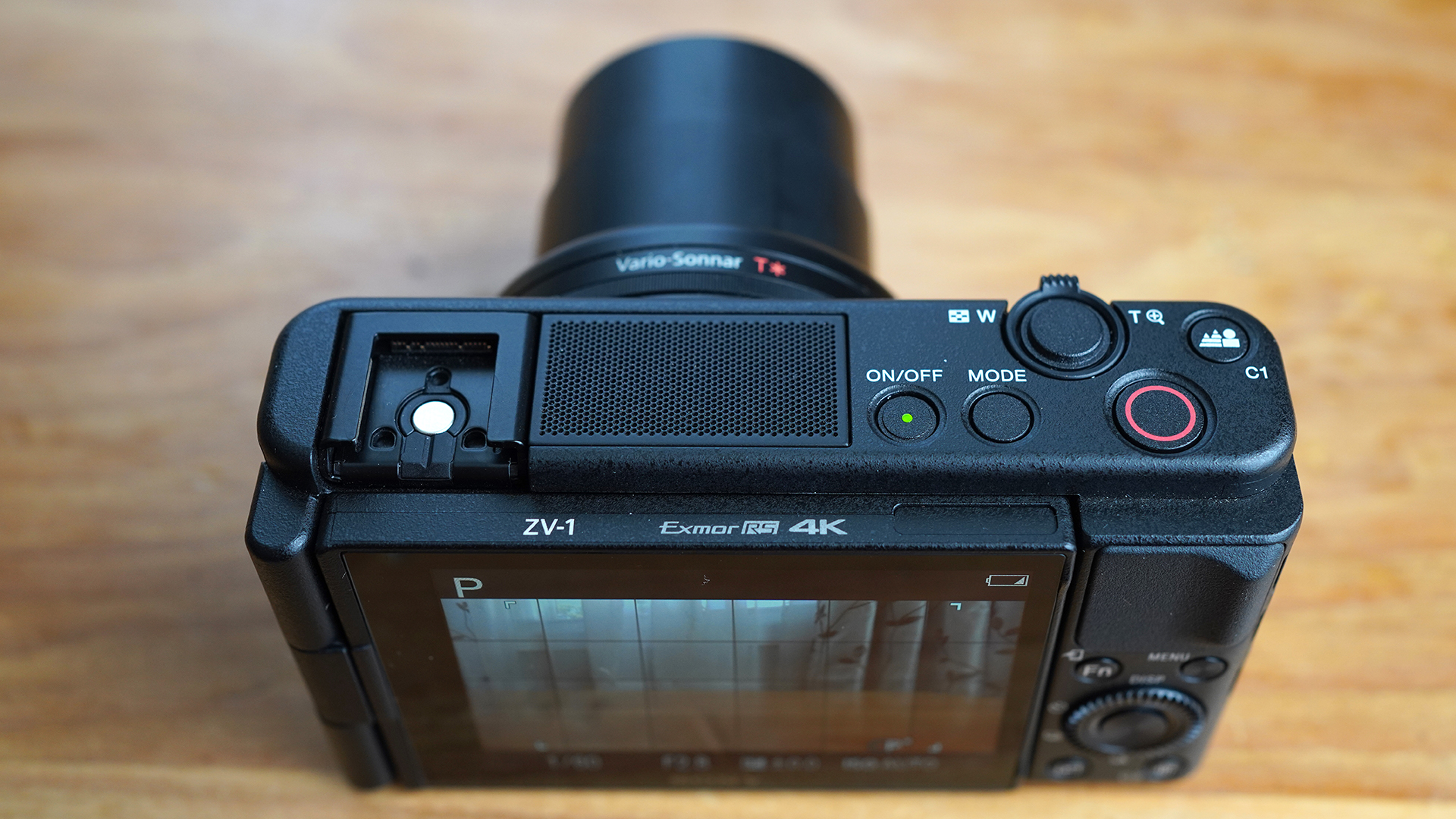
At the same time, the popular pop-up viewfinder, pop-up flash and control ring that are found on the RX100 VII are all absent here. Yet even with these omissions, I still found the camera enjoyable to use.
Sony ZV-1 review: Video
Overall, I was impressed with the Sony ZV-1’s video quality, both in the daylight and in some low-light settings.
As I mentioned, I used the Sony Vlogger Kit (ACCVC1) for this review, which allowed me to pair the camera with a gimbal-like grip which also doubles as a tripod. This was really useful when I shot video of myself singing with my guitar in a pub in Mattituck, Long Island, as it meant I didn’t have to worry about bringing even more gear; the fact that it doubles as a tripod is really quite handy.
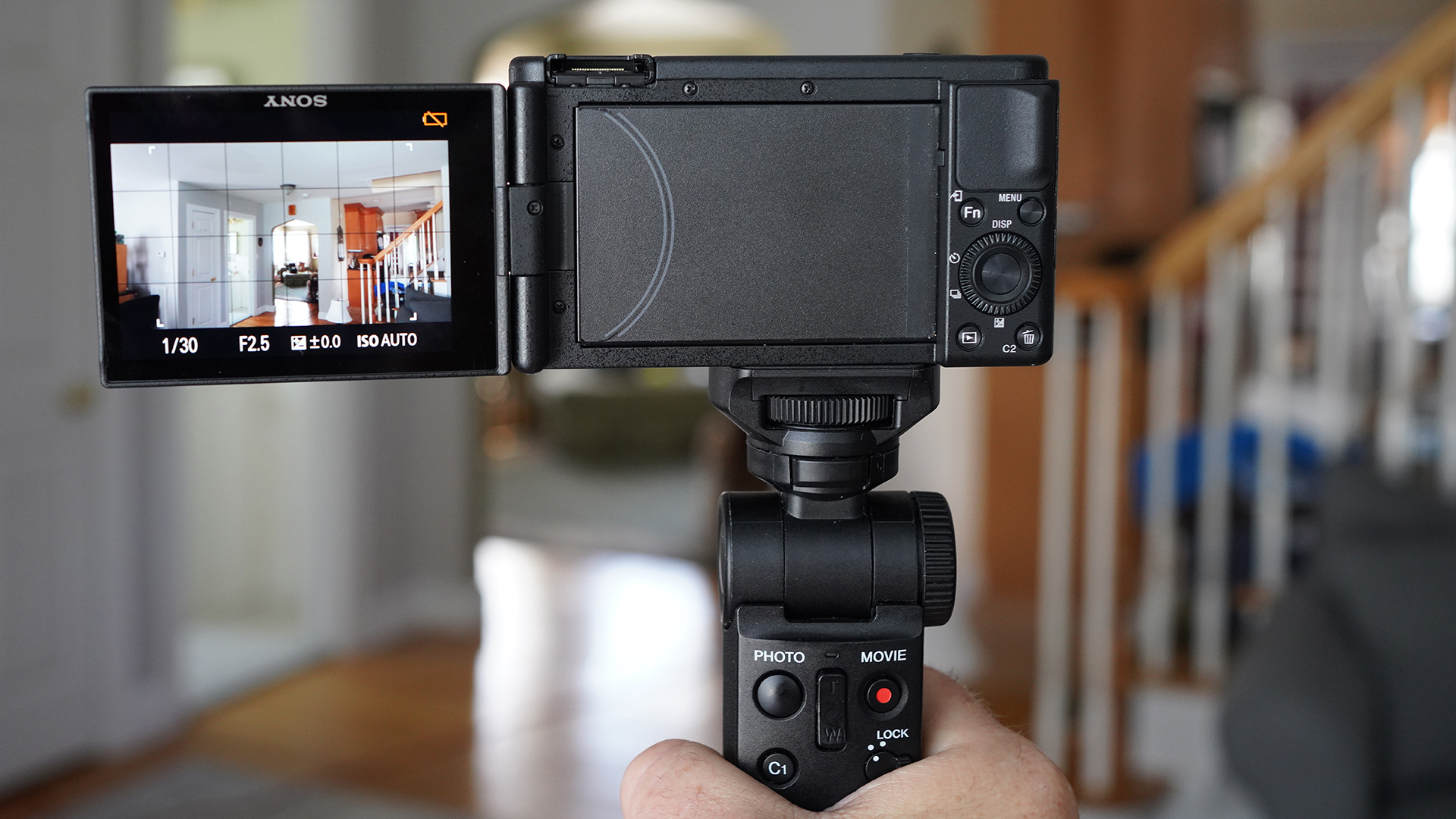
Overall, I found my video clips had very good dynamic range and for the most part included crisp, sharp details. However, you may not always want sharp detail — and that’s where the Sony ZV-1’s dedicated defocus button comes in.
This is found on top of the camera body, and when turned on sets the camera to its widest aperture of f/1.8; this creates a very nice bokeh effect in the background, which allows you to focus on the subject matter. And if you don’t want to use it, you can simply turn it back off. Plus, you can employ it while you’re shooting.
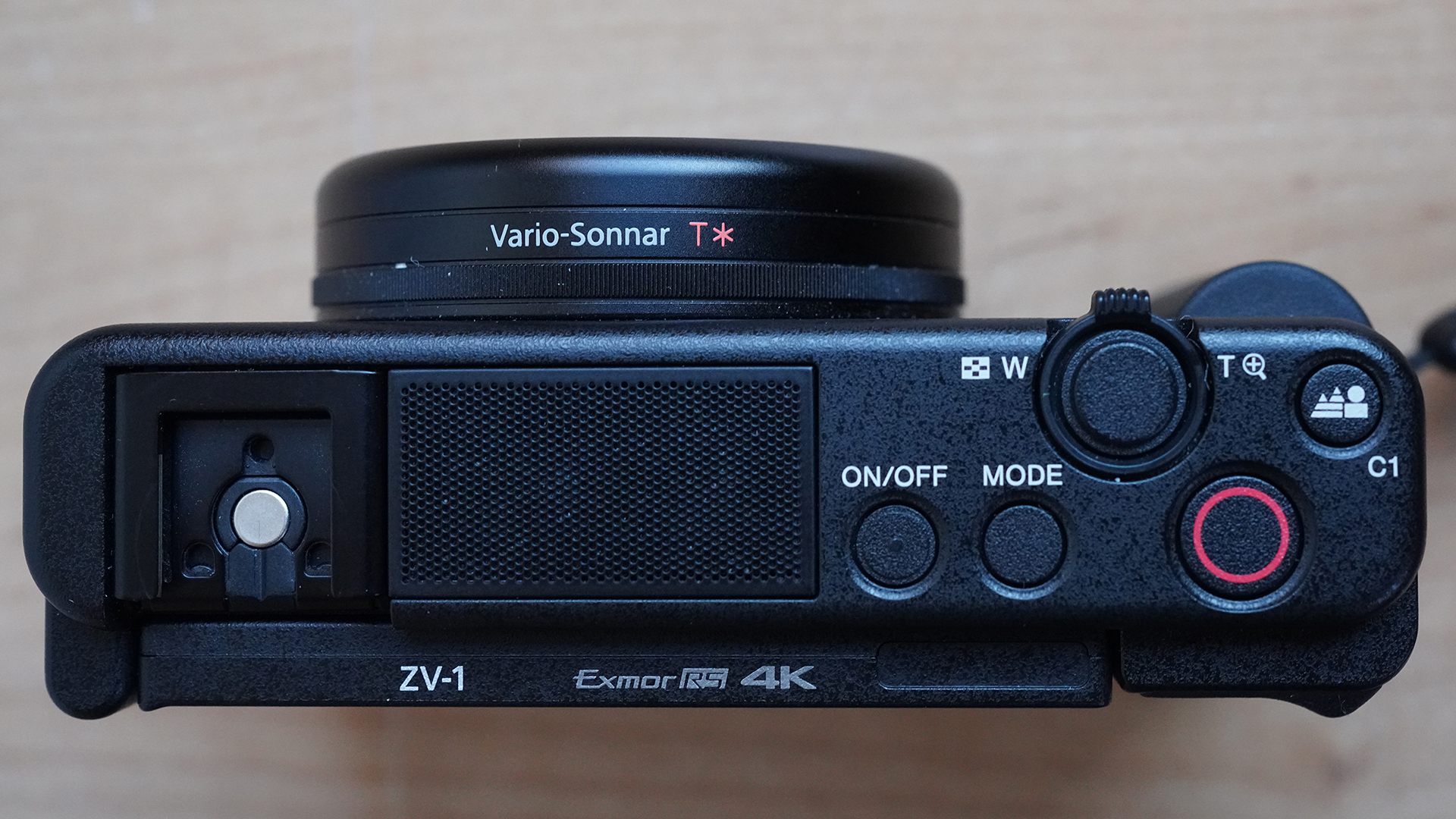
Another feature I liked on this camera — although it didn’t work in all cases — is the new Product Showcase Setting. Here, the camera “knows” when to focus on a product — for instance, when it’s placed in the foreground. It’s another iteration of Sony’s Real-time Eye AF and Real-time Tracking AF for video, which the company says “allows the ZV-1 to seamlessly switch focus between multiple subjects while controlling the AF speed and tracking sensitivity.” So, instead of maintaining the focus on the subject’s eye, it switches instead to focusing on the product in front of it.
By and large, it worked pretty well, particularly when there was lettering or numbers on the product. But when I tried using the supplied (and very colorful) fuzzy wind muff, it didn’t always lock in as quickly, and sometimes not at all. Still, most of the time it worked very well, and I can see vloggers getting excited about this.
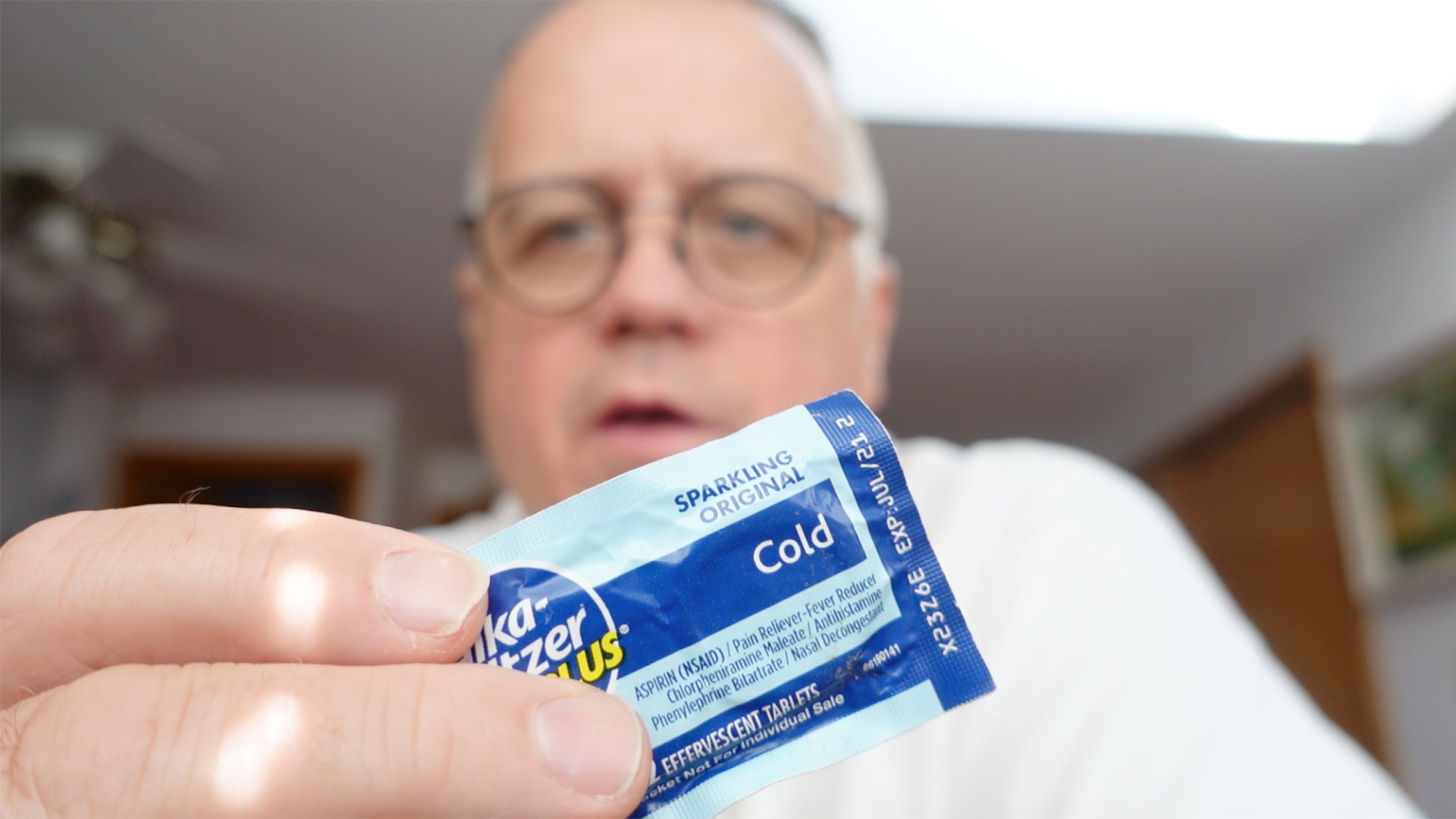
However, not every feature worked flawlessly. For example, take the Sony ZV-1’s image stabilization. To bring up the IS mode I wanted to use, I clicked on the Fn (or function) button on the back of the camera, to bring up the relevant menu. On the far left side, I selected the Active IS mode for the image stabilizer. My hope was that this would eliminate the jitter as I walked, but unfortunately all it did was minimize it; it didn’t make it smooth the way a gimbal would with a DSLR or a mirrorless camera.
As for the audio, Sony mentioned that the camera has a new type of mic: a directional 3-capsule mic designed for forward-directional audio. Sony says that this allows the camera to capture clear audio “of the subject’s voice while minimizing background noise, especially when operating in selfie mode.”
I tested the mic in a noisy situation: as mentioned before, I had the opportunity to play a gig in Mattituck and I think the ZV-1 did a very good job recording the fun atmosphere of a live concert. I also believe it did a decent job in being able to distinguish my voice from the noise of the crowd.
However, I really loved the fact that Sony included a handy wind muff (or “dead cat” as some call it) to put over the mic. This can be really important outdoors, where even a gentle wind can distort all your audio, and I found it to be pretty effective in use.
Low light and nighttime are always challenging for cameras, with even the best point-and-shoot cameras usually struggling. The ZV-1 did a decent job in low light, but I found it began to struggle in very low light or when shooting at nighttime. That was certainly the case when using its Auto or intelligent Auto video settings, so I'd suggest switching to manual mode in these situations.
Sony ZV-1 review: Slow-motion video
Slow motion is great on these cameras — you can shoot at 120 fps (which is about 4x as slow as real-time-shooting at 30 frames per second). But you also have the ability to shoot a higher frame rates, but with a lower resolution. Here’s the resolution you get with those three short burst slow-motion modes (when you use the quality priority setting):
- 240fps or 8x slow motion: (1,824 x 1,026 resolution)
- 480fps or 16x slow motion: (1,824 x 616 resolution)
- 960fps or 32x slow motion: (1,244 x 420 resolution)
The two higher HFS modes — 960 and 480 — give you pretty low resolution. However, at 240fps, the resolution is still almost full HD quality.
I found the modes really fun to use, particularly with action shots, for instance my son throwing a baseball. At 960 fps, it was really compelling watching the baseball leave my son’s fingers so slowly — or 32 times slower than I see him throw it in real life.
Sony ZV-1 review: Livestreaming and webcam
Since the start of the Covid pandemic, many manufacturers have added the ability to use a camera as a webcam; we've got a full guide to how to use your camera as a webcam here.
The Sony ZV-1 launched without the ability to be used as a webcam, but Sony released a firmware update in February that added this feature. It works with Windows and Mac devices, and I found the process to be seamless whether I was connecting via a Google Meet video chat or a Zoom call. Both the image and audio were clear and consistent throughout.
However, you do need to make one change on the ZV-1 in order to enable the feature: in the second major camera tab, you need to go to the fourth page (4 of 9 pages) and at the bottom, click on USB Streaming and then select “Yes”. Then you’re set to use the camera as a webcam. It’s also worth noting that it doesn’t currently work with macOS 11 Big Sur; I was only able to connect to my MacBook Pro because I’m using macOS Catalina.
Sony ZV-1 review: Image quality
As with my earlier review of the Sony DSC-RX100 VI compact camera, the Sony ZV-1 did an excellent job of shooting a still life image in bright light, with plenty of detail and very good color saturation and color fidelity.
However, I felt the low-light image had a little more noise and was a bit softer in details than I would have liked — which again matches my experience with the RX100 VI. However, the noise didn’t alter the color accuracy.
When shooting with it around the house and in the street nearby, I again found it to be on a par with the RX100. I even tried some panoramas, in the daytime and at night, as well as seeing how the Smooth Skin Effect feature worked on the wrinkles on my face; for the most part, it did a decent job in lessening them.
The ZV-1 also keeps some of the fun Picture Effects present on the RX100. For example, I shot a scene of my hometown, Malverne, at night, using the Illustration picture effect; I found it made the image look a little like Edvard Munch’s “The Scream.”
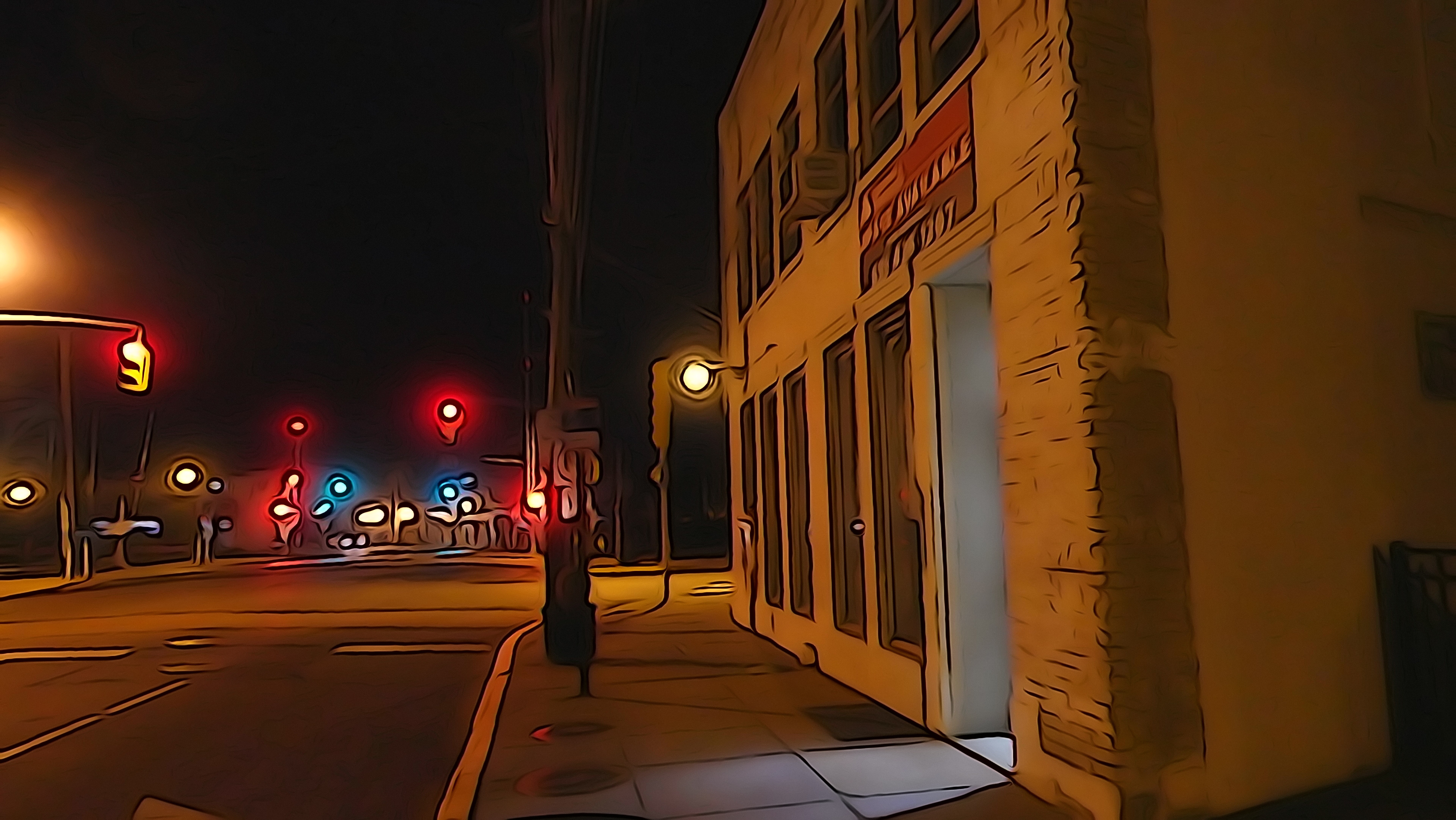
It’s just one of many Picture Effects that you can shoot still images with, including Toy Camera, High Contrast Monochrome, HDR Painting and Watercolor. And although Illustration doesn’t work in video mode, there are several that do, including Pop Color, Posterization, Retro Photo, Soft High-key, Partial Color and High Contrast Mono.
Sony ZV-1 review: Verdict
The Sony ZV-1 is an excellent investment for vloggers who are just starting out in the field, or even those who have been at it for a while but who aren’t interested in getting bogged down in overcomplicated rigs. The clever sideways-opening flip-out screen will prove to be very useful and the Product Showcase and Defocus modes both work really well. The Sony ZV-1 shoots nice video and records good quality audio, and all at a reasonable price.
Against that, potential buyers should be aware that the image stabilization won’t smooth over the bumps or jitter when you’re walking; you’ll want a DSLR or mirrorless camera with a gimbal for that.
That aside, I think this small, very smart camera will be a valuable asset for many vloggers — and even more so now that it can stream as a webcam, too.
- More: These are the best cameras right now
Terry Sullivan is an experienced technology journalist who has covered consumer electronics including cameras, smartphones, audio tech and software among many other things. His work has appeared in the likes of Consumer Reports, PCMag, Lifehacker, and the New York Times and he is also a teacher, photographer, artist, and musician.
